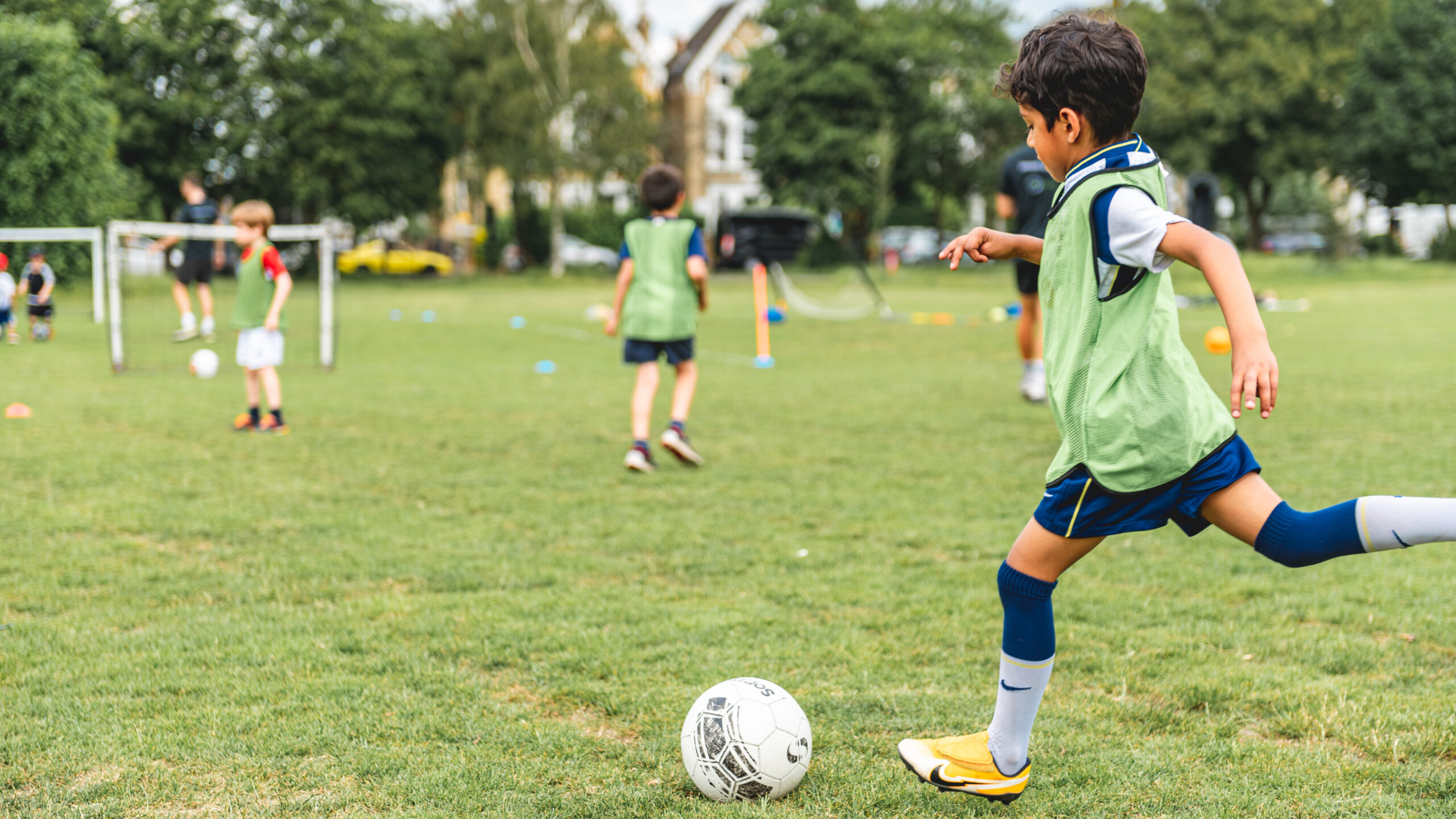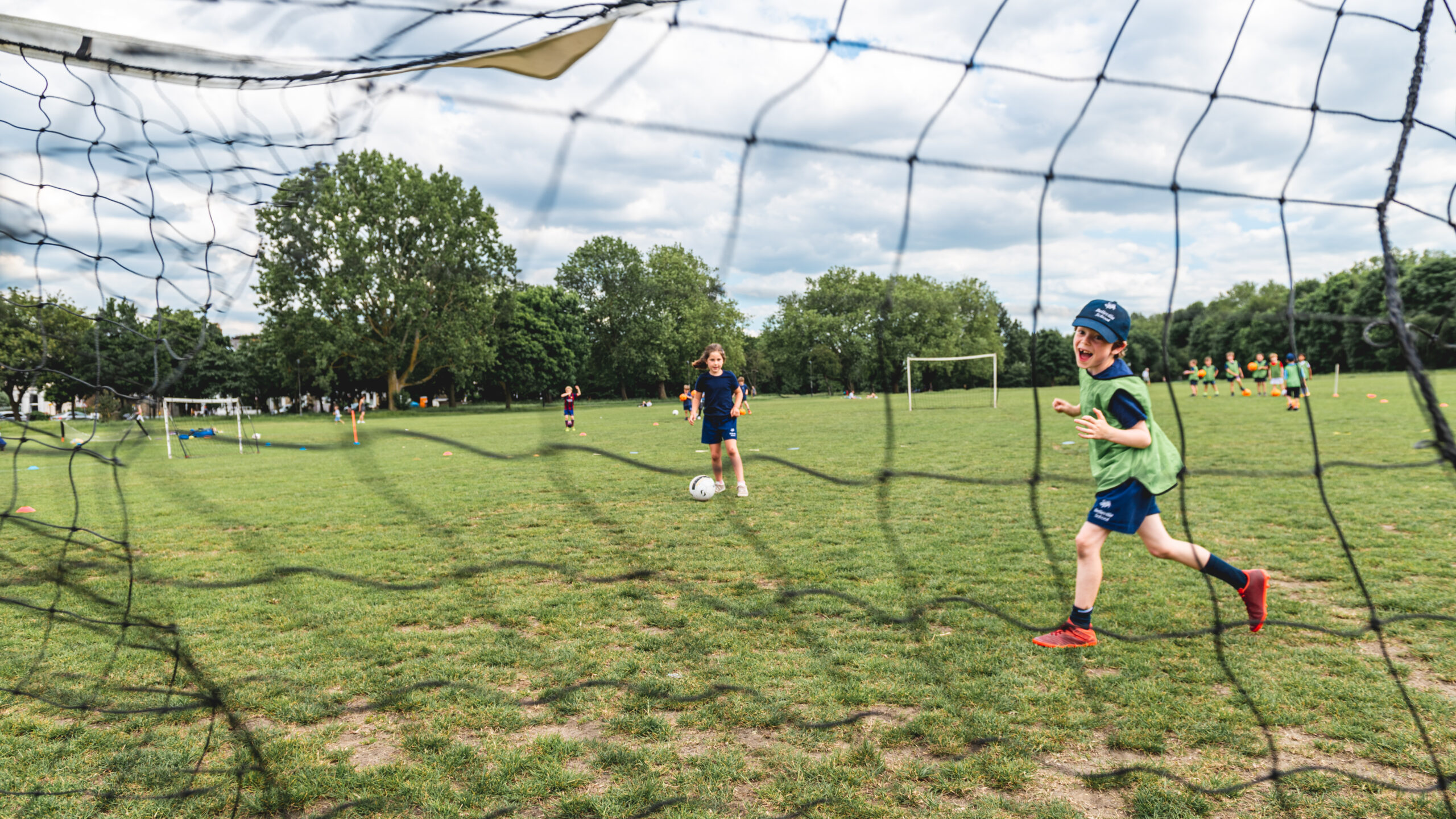Introducing children into new activities and groups for the first time can be a daunting task. Children will often display signs of apprehension or shyness. However, the exploration of comfort zones and boundaries is a key stage of early childhood learning.
Children’s perceptions of discomfort are largely shaped by those they have most contact time with; in the majority of cases this will be their parents/guardians. This responsibility to shape a child’s long-term personality and interests must be overwhelming at times.
Being asked to fulfill the role of provider, interpreter and role model is tough for any individual in any context. This is why organised sport can provide an excellent opportunity for parents to share some of these developmental responsibilities with those around them.
Both PE lessons in school and extra-curricular sports clubs provide an opportunity for children to engage in at least 60 minutes of daily moderate to vigorous physical activity (recommended physical activity guideline). By following these guidelines, children are susceptible to a range of physical, social and psychological benefits:
– Build self-perceptions
– Improved social skills
– Develop resilience
– Increased physical fitness
– Increased confidence
– Enhanced bone health
– Reduced body fat
– Higher activity rates in adolescence
– Mental health related quality of life in adulthood
Despite the evidence that physical activity promotes health benefits, not all individuals maintain the same levels of sporting participation throughout adolescence and adulthood as they did in childhood.

Five major areas for sporting dropout have been identified:
1) Lack of enjoyment.
2) Perceptions of competence.
3) Social pressures.
4) Competing priorities.
5) Physical factors.
There is also a risk of withdrawal when major life events occur, such as changing schools. The reason why sporting drop off is so prevalent between ages 10-14 is because this stage of a child’s life includes regular struggles to cope in the face of all of the five factors mentioned above.
Although the additional time required to travel to school, do extra homework and to socially interact with new friends can limit the opportunities for sporting participation, those who possess an intrinsic motivation will be the most likely to not be affected by these competing priorities.
Intrinsic motivation can be promoted within physical activity settings by allowing children to explore and experiment with a range of sports, instead of forcing them to specialise in one particular sport. By promoting the opportunity to try various sports, the child is more likely to maintain participation over time and be less reliant on external sources of motivation.
Similarly, motivation is likely to be higher if the priority of sporting activity is enjoyment rather than achievement. High achievement may not be a feasible goal for the majority of young sports people, however, the opportunity to have fun, enjoy the company of those around you through physical activity is available to everyone.
In short, we believe that the best ways to tackle loss of motivation and participation in organised sports is by keeping activities varied & fun. This permeates through most facets of human existence and sport is no different.
Keep moving. Stay happy. Thanks for reading.
Coach Elliot & Coach Ben

References and Recommended Readings:
1. Sport England. (2021, December). Active Lives Children and Young People Survey. Academic Year 2020-21.
2. Appelqvist-Schmidlechner, K., et al. (2021). Childhood Sports Participation is Accociated With Health-Related Quality of Life in Young Men: A Retrospective Cross-Sectional Study. Frontiers in Sports and Active Living, 3, 74.
3. Crane, J., & Temple, V. (2015). A Systematic Review of Dropout From Organized Sport Among Children and Youth. European Physical Education Review, 21(1), 114-131.
4. Eime, R. M., et al. (2013). A Systematic Review of the Psychological and Social Benefits of Participation in Sport for Children and Adolescents: Informing Development of a Conceptual Model of Health Through Sport. International Journal of Behavioral Nutrition and Physical Activity, 10(1), 1-21.
5. Eliasson, I., & Johansson, A. (2021). The dsengagement Process Among Young Athletes When Withdrawing From Sport: A New Research Approach. International Review for the Sociology of Sport, 56(4), 537-557.
6. Neely, K.C., & Holt, N. L. (2014). Parents’ Perspectives on the Benefits of Sport Participation for Young Children. The Sport Psychologist, 28(3), 255-268.
7. Sport England (2021, December). Active Lives Children and Young People Survey. Academic Year 2020-21.